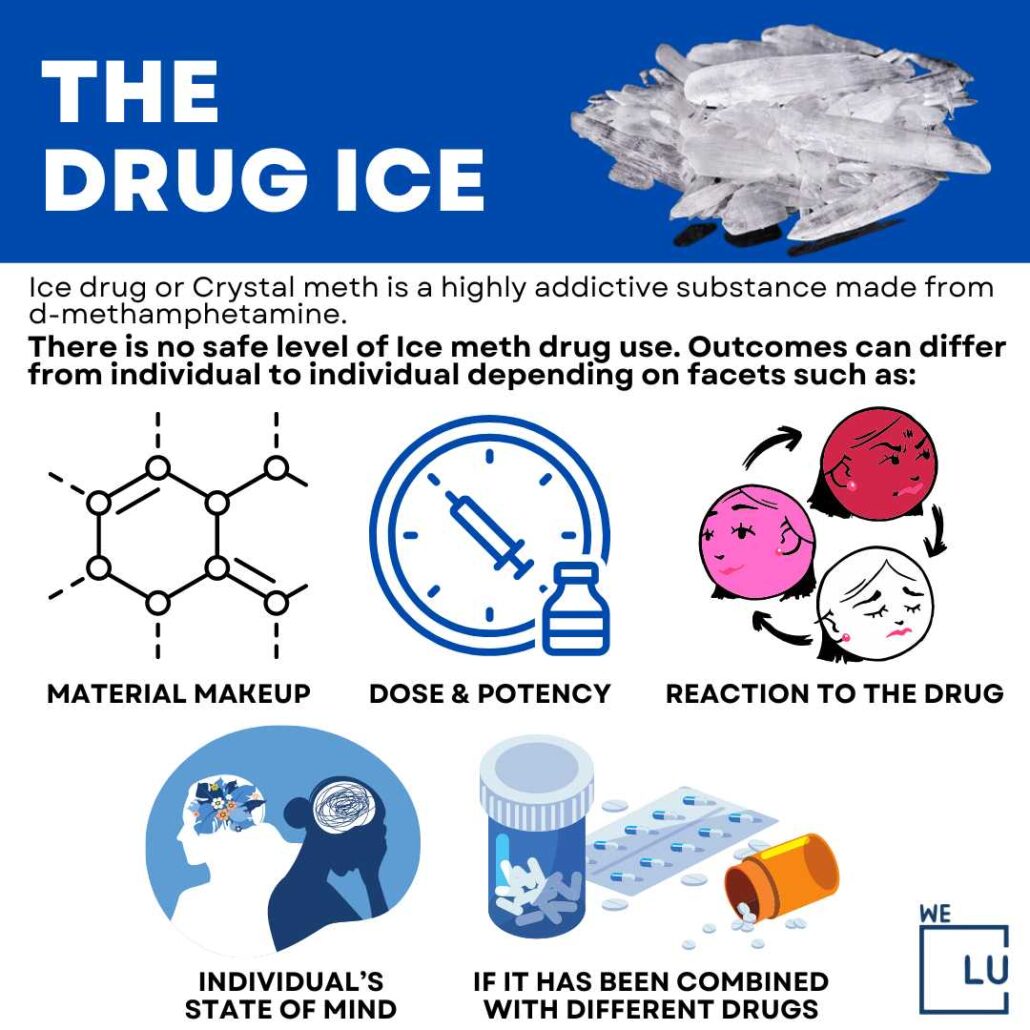Crystal meth which is also known as Ice, is a highly addictive substance derived from D-methamphetamine. The powerful drug can have a profound impact on both the body and mind, leading to a significant number of addiction cases every year. In 2020 the amount of people with a minimum age of 12 and over who reported crystal meth use reached a shocking 2.6 million. The high rates of use coupled with the limited medical applications of crystal meth serve as a stark warning regarding the lasting adverse side effects that extend beyond the brief high of the "high."
Understanding Crystal Meth:
Crystal methamphetamine is a stimulant which influences the central nervous system which triggers an intense release of dopamine, which is a neurotransmitter involved in enjoyment and reward. Dopamine's release causes an immediate and powerful feeling of energy, euphoria and enhanced focus. However, the consequences that come from crystal meth use are far from being short-lived, with lasting impacts that can affect multiple aspects of an individual's wellbeing and health.
Physical Impact:
Ice Drug exerts a severe toll on the body. Long-term use can result in extreme weight gain, dehydration, dental problems (often called "meth mouth") and skin sores and an overall decline in physical fitness. The stimulant properties of the drug can increase heart rate and blood pressure that put a great strain on the cardiovascular system, which could lead to strokes, heart attacks, or other life-threatening conditions.
Neurological and Mental Health Effects:
Crystal meth can cause serious harm to the brain. It alters brain chemistry and structure, impairing memory, cognitive function, and judgement. The long-term use of the drug can cause paranoia, hallucinations, psychosis, and intense mood disturbances. The mental and neurological effects may persist for a long time after the drug is out of the system, which makes recovering and rehabilitation a challenging and difficult process.
Addiction and Social Impact:
The addictive qualities of crystal meth are notorious. The drug sabotages the reward system in the brain and can lead to a recurrent drug seeking behavior, and a consuming desire to take it again. The grip of addiction may be overwhelming, tearing apart families, straining relationships, and creating financial instability and legal problems. The social consequences on society crystal meth addiction is profound and can isolate individuals from their families and leaving an untold trail of destruction in its wake.
Addressing the Adverse Effects:
Understanding the long-lasting negative consequences of crystal meth is essential in combatting its damaging influence. A successful prevention strategy should center on awareness and education that target both those who are at risk as well as the wider community. By highlighting the physical, neurological and social impacts that come with crystal meth use can dissuade prospective users and inspire those struggling with addiction to seek treatment.
An extensive addiction treatment plan is crucial for tackling crystal meth abuse. Research-based therapies, such as motivational and cognitive-behavioral therapies can aid individuals in conquering addiction and tackling the mental health problems that come with it. Collaboration with healthcare professionals, counselors and support groups offer a holistic support system for recovery and relapse prevention.
In addition harm reduction strategies should be implemented to minimize the risks that are immediate with crystal meth use. This includes access to clean needles secure injection sites and measures to prevent overdoses all of which could save lives and lead to recovery.
Conclusion:
Crystal meth is a devious drug that is derived from d-methamphetamine can have a devastating impact on the body, mind and society. The high rates of addiction that are reported each year is a painful reminder of its enticement and destructive potential. It is important to realize that the detrimental consequences that come from crystal meth extend far beyond the initial high, and can cause long-lasting physical, neurological, and social damage. By prioritizing prevention, offering the most comprehensive addiction treatment, as well as adopting measures to reduce harms and measures, the community can be able to work towards decreasing the negative effects caused by crystal meth and supporting individuals in their recovery journey.
Also check: Fetal alcohol syndrome face

Comments
Post a Comment